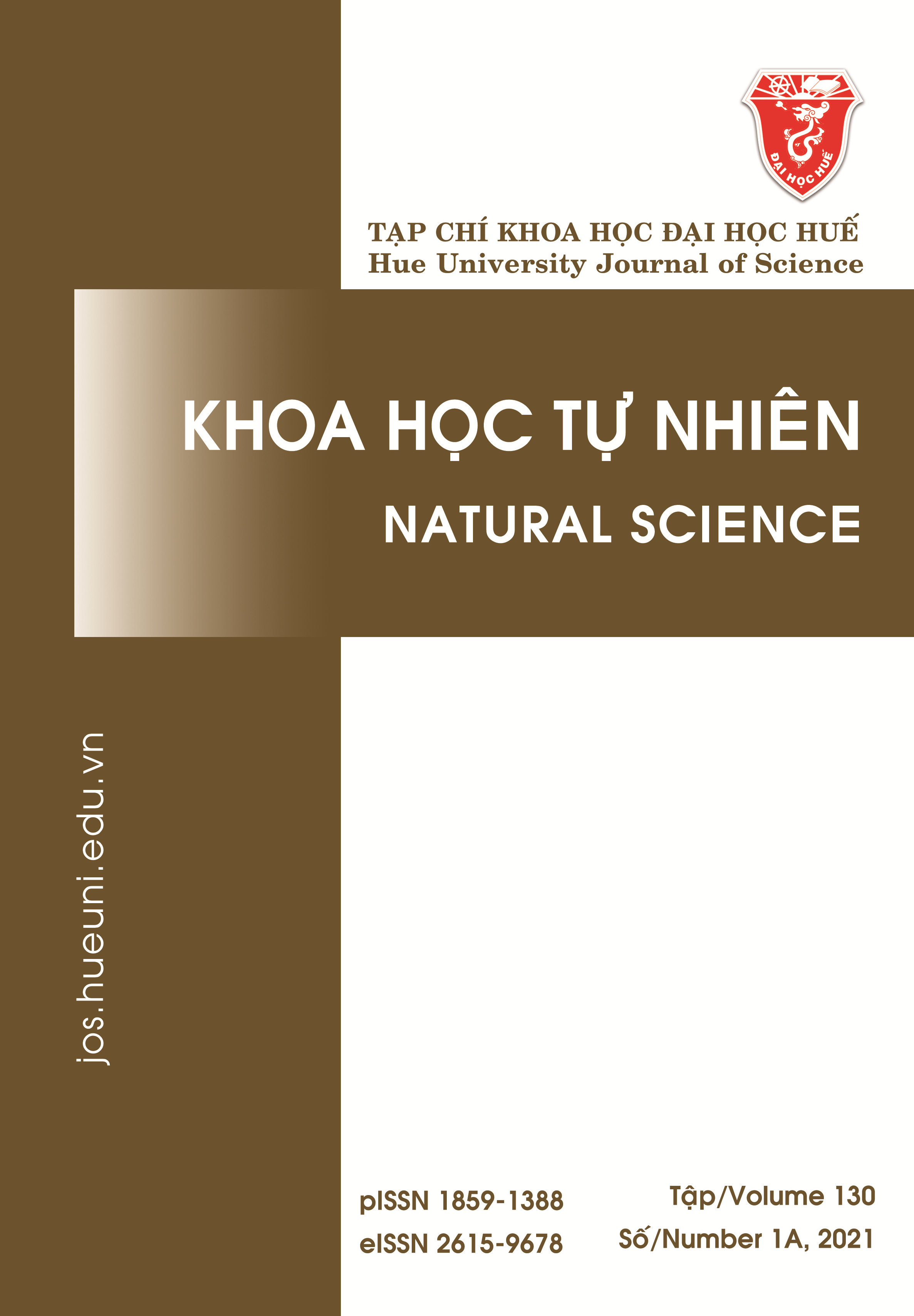Tóm tắt
Cây Đìa đụm (Heliciopsis lobata (Merr.) Sleum) có nhiều tác dụng trong điều trị bệnh và được sử dụng rộng rãi trong các bài thuốc y học cổ truyền của người dân tộc thiểu số. Trong nghiên cứu này, dịch chiết methanol từ lá của cây Đìa đụm được sử dụng để đánh giá khả năng ức chế các tế bào ung thư vú và ung thư gan bằng phương pháp sàng lọc MTT, phân tích hình thái tế bào và hình thái kiểu nhân apoptosis bằng thuốc nhuộm nhân tế bào DAPI. Kết quả cho thấy dịch chiết methanol của lá cây Đìa đụm đã ức chế sự tăng sinh tế bào ung thư gan dòng HepG2 và ung vú dòng MCF7 với giá trị IC50 tương ứng là 0,084 mg/mL và 0,812 mg/mL. Dịch chiết này cảm ứng quá trình apoptosis đối với dòng tế bào HepG2 mạnh hơn so với dòng tế bào MCF7, và như vậy có tiềm năng chống lại sự tăng sinh của các tế bào ung thư gan.
Tài liệu tham khảo
- Bray F, Ferlay J, Soerjomataram I, Siegel RL, Torre LA, Jemal A. Global cancer statistics 2018: GLOBOCAN estimates of incidence and mortality worldwide for 36 cancers in 185 countries. CA: A Cancer Journal for Clinicians. 2018;68(6):394-424. DOI: https://doi.org/10.3322/caac.21492
- Lichota A, Gwozdzinski K. Anticancer Activity of Natural Compounds from Plant and Marine Environment. International Journal of Molecular Sciences. 2018;19(11):3533. DOI: https://doi.org/10.3390/ijms19113533
- Li D, Liu M-S, Li Z-L, Kang S-L, Hua H-M. Studies on chemical constituents of Heliciopsis lobata II. China Journal of Chinese Materia Medica. 2008;33(4):409-511.
- Feng J, Chen X, Wang Y, Du Y, Sun Q, Zang W, et al. Myricetin inhibits proliferation and induces apoptosis and cell cycle arrest in gastric cancer cells. Molecular and Cellular Biochemistry. 2015 06 27;408(1-2):163-170. DOI: https://doi.org/10.1007/s11010-015-2492-1
- Man X, Yang L, Liu S, Yang L, Li M, Fu Q. Arbutin promotes MC3T3‑E1 mouse osteoblast precursor cell proliferation and differentiation via the Wnt/β‑catenin signaling pathway. Molecular Medicine Reports. 2019;19(6):4637-4644. DOI: https://doi.org/10.3892/mmr.2019.10125
- Riccardi C, Nicoletti I. Analysis of apoptosis by propidium iodide staining and flow cytometry. Nature Protocols. 2006;1(3):1458-1461. DOI: https://doi.org/10.1038/nprot.2006.238
- Qi W-Y, Ou N, Wu X-D, Xu H-M. New arbutin derivatives from the leaves of Heliciopsis lobata with cytotoxicity. Chinese Journal of Natural Medicines. 2016;14(10):789-93. DOI: https://doi.org/10.1016/S1875-5364(16)30094-2
- He Q-Q, Liu M-S, Jin D-J, Kong L-Y. Phenolic glycosides from leaves of Hopiciopsis lobata: Note. Journal of Asian Natural Products Research. 2006;8(4):373-377. DOI: https://doi.org/10.1080/10286020500172251
- Elmore S. Apoptosis: A Review of Programmed Cell Death. Toxicol Pathol. 2007;35(4):495-516. DOI: https://doi.org/10.1080/01926230701320337
- Carneiro BA, El-Deiry WS. Targeting apoptosis in cancer therapy. Clinical Oncology. 2020;17(7):395-417. DOI: https://doi.org/10.1038/s41571-020-0341-y
- Safarzadeh E, Sandoghchian Shotorbani S, Baradaran B. Herbal Medicine as Inducers of Apoptosis in Cancer Treatment. Advanced Pharmaceutical Bulletin. 2014;4(5):421-427. DOI: https://doi.org/10.5681/APB.2014.062
- Jagetia GC. Anticancer activity of Helicia nilagirica bedd in mice transplanted with Dalton’s lymphoma. International Journal of Complementary & Alternative Medicine. 2018;11(2):112-123. DOI: https://doi.org/10.15406/ijcam.2018.11.00380

công trình này được cấp phép theo Creative Commons Ghi công-Chia sẻ tương tự 4.0 License International .
Bản quyền (c) 2021 Array




